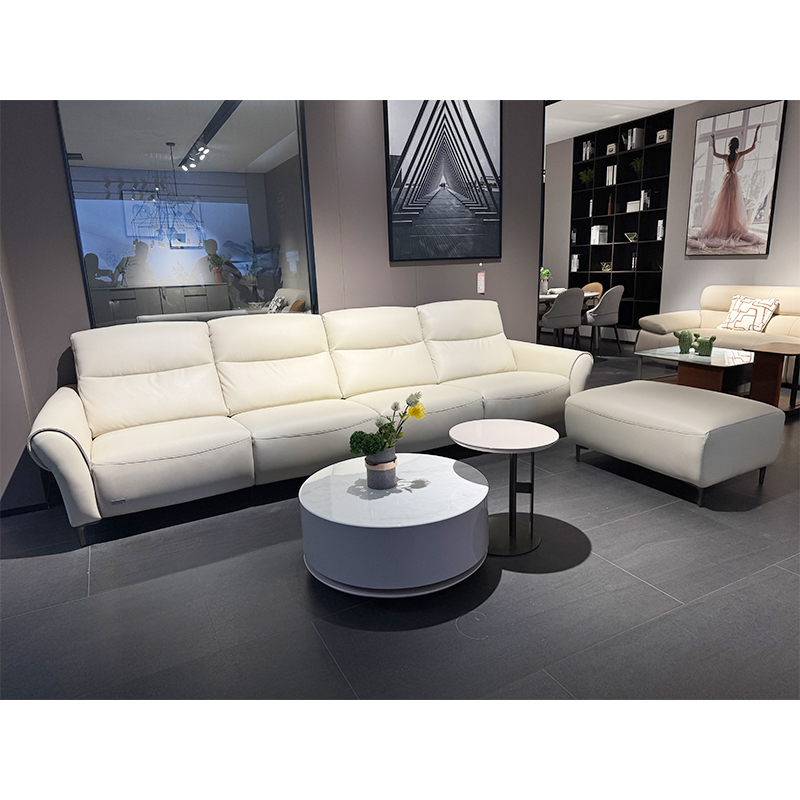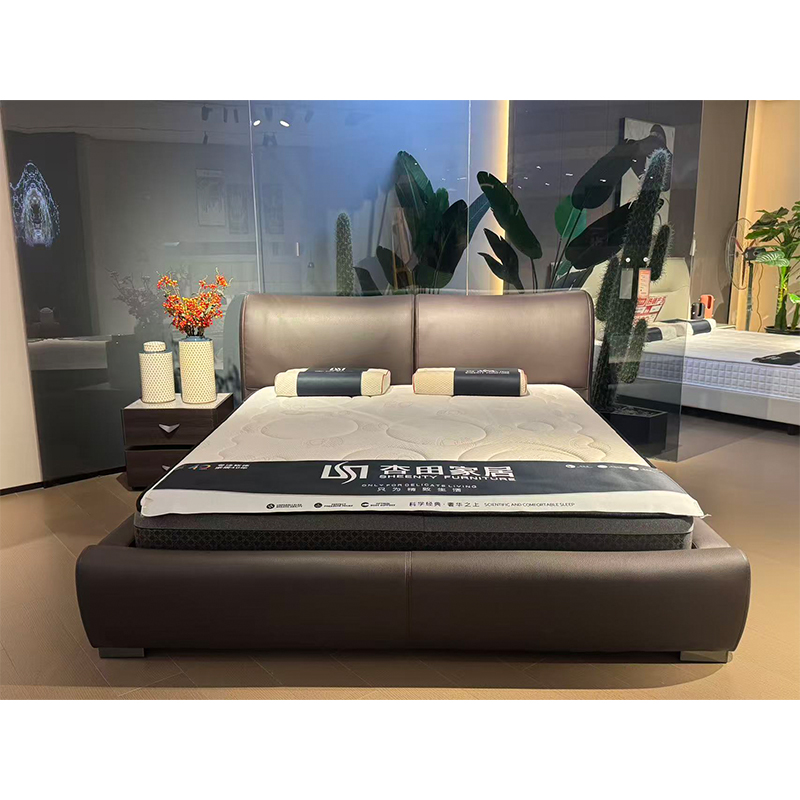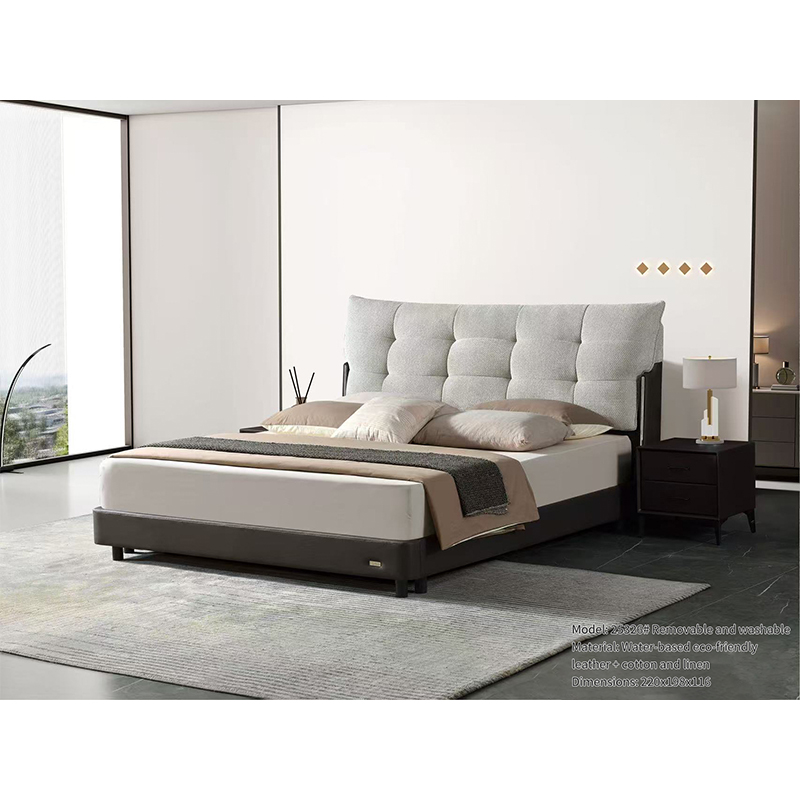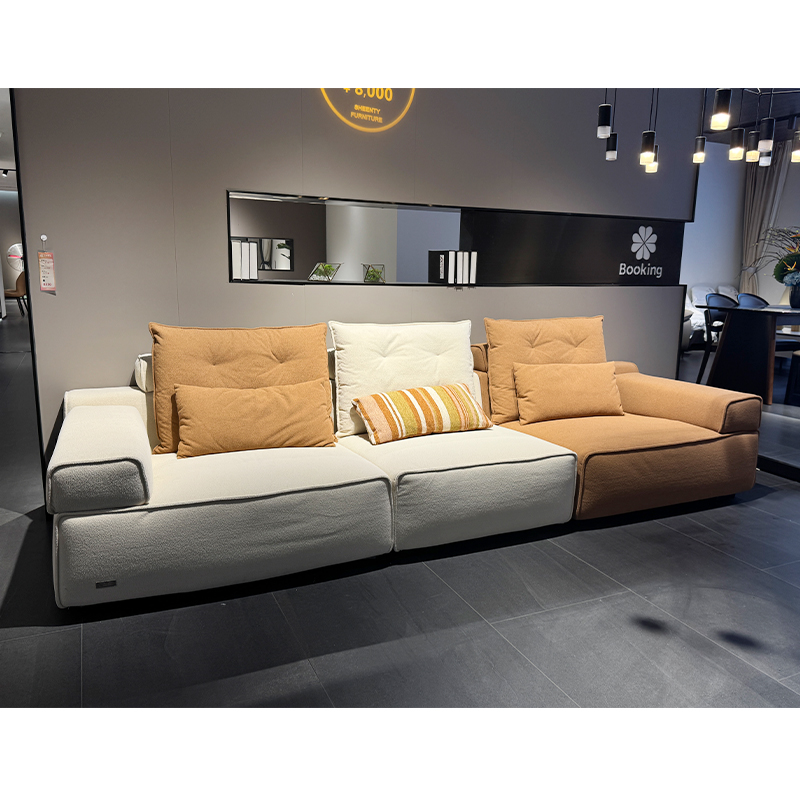Can a minimalist sofa embody modern minimalism and blend harmoniously with a variety of decor styles?
Release Time : 2025-10-08
In contemporary home design, the minimalist sofa has long transcended simple seating to become the defining element of the living room. Rather than relying on intricate carvings or heavy contours to capture the eye, it quietly shapes the mood and rhythm of the space with restrained lines, subdued colors, and precise proportions. The core of modern minimalism is to "remove the essential from the dross," emphasizing that form follows function, pursuing visual tranquility and order. The minimalist sofa embodies this philosophy—eliminating all superfluous ornamentation and refining structure, materials, and proportions to their essential essence, resulting in a piece of furniture that possesses a quiet yet powerful presence.
The minimalist sofa's exterior is typically composed of clean geometric forms, with straight lines defining crisp contours and no cumbersome armrest carvings or complex back panels. This design language inherently possesses a strong sense of modernity. While unassuming, it immediately conveys a rational and restrained aesthetic. The low backrest, flat seat, and slightly flared base—these details combine to create a visually light and airy feel, as if the furniture were simply placed on the floor, not encroaching on space but rather adding to the sense of spaciousness. In small apartments or open-plan layouts, this sense of lightness can effectively alleviate the feeling of crowding, making limited spaces appear more airy and free.
However, simplicity doesn't necessarily mean monotony. The charm of a great minimalist sofa lies precisely in the rich details embedded within its minimalist framework. The choice of fabric, the direction of the stitching, the shape of the legs, and even the filling of the cushions all silently convey quality and taste. Matte fabrics offer a warm touch, while leather surfaces reflect a subtle luster. Thin metal legs add a touch of industrial flair, while the solid wood base infuses a natural warmth. These subtle material contrasts give the sofa a sense of depth and warmth while maintaining an overall simplicity, avoiding the misconception of being cold or empty.
More importantly, minimalist sofas are highly versatile in style. It lacks the overt imprint of a time like classic sofas, nor the individuality of bohemian furniture. Its blank nature makes it an ideal neutral medium, seamlessly integrating into a variety of decor styles. In a Nordic space defined by pure white walls and solid wood furniture, it continues the natural and bright tone. In an industrial-chic home with concrete floors and metal fixtures, its cool lines complement the overall rugged texture. In a Japanese Zen space with warm-toned furnishings and greenery, its low-slung form and soft silhouette lend a tranquil touch. Even in a modern, mixed-use space with bold colors and rich décor, a minimalist sofa serves as a visual anchor, balancing the overall complexity and preventing clutter.
This blending ability stems from its restrained design. Rather than seeking to be the center of attention, it settles into the background, leaving room for other decorative elements to shine. At the same time, it avoids appearing cheap or flimsy due to its oversimplification. Perfect proportions, solid workmanship, and high-quality materials imbue it with a calming sense of sophistication, ensuring it maintains dignity and style in any setting.
From a practical perspective, the minimalist sofa's versatility also translates to a long aesthetic lifespan. It won't quickly become outdated with changing trends, nor will it look out of place with changing soft furnishings. Like a classic coat, it can accompany its occupants through multiple stages of life, adapting to different paces and aesthetic preferences.
In summary, the minimalist sofa not only embodies modern minimalism, but also, with its inherent inclusiveness and elegant neutrality, harmoniously coexists with a variety of decor styles. Rather than being the star of the show, it serves as a supporting role that understands the need for space, silently supporting the aesthetic framework of the entire space. Choosing such a sofa means choosing a lifestyle unconstrained by style, allowing the home to always have room to breathe and the potential for change.
The minimalist sofa's exterior is typically composed of clean geometric forms, with straight lines defining crisp contours and no cumbersome armrest carvings or complex back panels. This design language inherently possesses a strong sense of modernity. While unassuming, it immediately conveys a rational and restrained aesthetic. The low backrest, flat seat, and slightly flared base—these details combine to create a visually light and airy feel, as if the furniture were simply placed on the floor, not encroaching on space but rather adding to the sense of spaciousness. In small apartments or open-plan layouts, this sense of lightness can effectively alleviate the feeling of crowding, making limited spaces appear more airy and free.
However, simplicity doesn't necessarily mean monotony. The charm of a great minimalist sofa lies precisely in the rich details embedded within its minimalist framework. The choice of fabric, the direction of the stitching, the shape of the legs, and even the filling of the cushions all silently convey quality and taste. Matte fabrics offer a warm touch, while leather surfaces reflect a subtle luster. Thin metal legs add a touch of industrial flair, while the solid wood base infuses a natural warmth. These subtle material contrasts give the sofa a sense of depth and warmth while maintaining an overall simplicity, avoiding the misconception of being cold or empty.
More importantly, minimalist sofas are highly versatile in style. It lacks the overt imprint of a time like classic sofas, nor the individuality of bohemian furniture. Its blank nature makes it an ideal neutral medium, seamlessly integrating into a variety of decor styles. In a Nordic space defined by pure white walls and solid wood furniture, it continues the natural and bright tone. In an industrial-chic home with concrete floors and metal fixtures, its cool lines complement the overall rugged texture. In a Japanese Zen space with warm-toned furnishings and greenery, its low-slung form and soft silhouette lend a tranquil touch. Even in a modern, mixed-use space with bold colors and rich décor, a minimalist sofa serves as a visual anchor, balancing the overall complexity and preventing clutter.
This blending ability stems from its restrained design. Rather than seeking to be the center of attention, it settles into the background, leaving room for other decorative elements to shine. At the same time, it avoids appearing cheap or flimsy due to its oversimplification. Perfect proportions, solid workmanship, and high-quality materials imbue it with a calming sense of sophistication, ensuring it maintains dignity and style in any setting.
From a practical perspective, the minimalist sofa's versatility also translates to a long aesthetic lifespan. It won't quickly become outdated with changing trends, nor will it look out of place with changing soft furnishings. Like a classic coat, it can accompany its occupants through multiple stages of life, adapting to different paces and aesthetic preferences.
In summary, the minimalist sofa not only embodies modern minimalism, but also, with its inherent inclusiveness and elegant neutrality, harmoniously coexists with a variety of decor styles. Rather than being the star of the show, it serves as a supporting role that understands the need for space, silently supporting the aesthetic framework of the entire space. Choosing such a sofa means choosing a lifestyle unconstrained by style, allowing the home to always have room to breathe and the potential for change.







